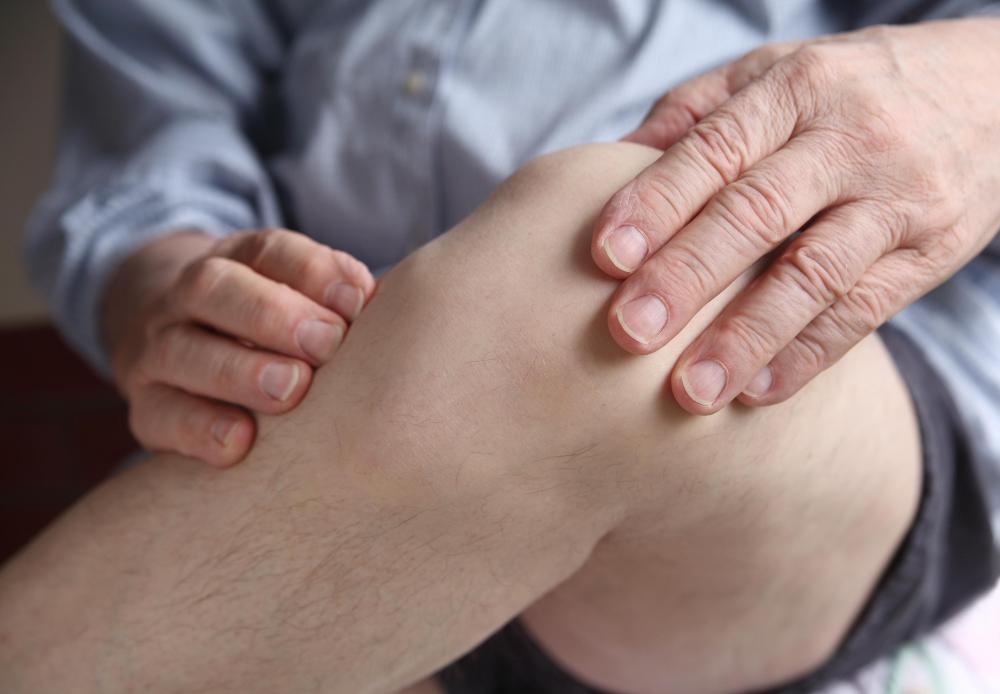At TheHealthBoard, we're committed to delivering accurate, trustworthy information. Our expert-authored content is rigorously fact-checked and sourced from credible authorities. Discover how we uphold the highest standards in providing you with reliable knowledge.
What are Common Causes of Joint Pain and Fatigue?
Joint pain and fatigue means achiness or discomfort in the joints, coupled with extreme exhaustion. Joints are the areas where two bones meet and can bend away from each other, like at the knees, knuckles and wrists. These two symptoms are caused by many relatively common medical conditions and a number of conditions that are rarer. A few causal illnesses include flus, most illnesses accompanied by fever, a variety of autoimmune disorders, different types of arthritis, hepatitis and hypothyroidism.
Most people will experience a few minor illnesses that cause joint pain and fatigue. For instance, these two symptoms often occur during the flu, and many people get at least one bout of flu during their lifetime. Moreover, just about any illness that creates fever is likely to cause at least temporary joint pain and fatigue. Fever can cause slight swelling in the joints, which makes them painful, and it often results in people feeling unusually tired and poorly rested, no matter how much they sleep.

A few infectious diseases are principal offenders when it comes to these two symptoms. Lyme disease is a relatively common cause. Less common is another tic-borne illness called brucellosis. Mononucleosis can create these symptoms, too. Complications of strep infections, such as rheumatic fever and bacterial endocarditis, are also partly identified by the presence of fatigue and joint discomfort. Most forms of infectious hepatitis, which principally affect liver function, list pain in the joints and fatigue as additional symptoms.

There are a host of autoimmune and/or chronic conditions associated with joint pain and fatigue. Some difficult medical conditions that are not technically autoimmune, but bear some relationship to autoimmune illnesses, are chronic fatigue syndrome and fibromyalgia. Both of these can lead to aching joints and extreme tiredness. Any form of arthritis that regularly occurs, such as rheumatism, may affect the joints, which in turn, affects sleep quality. This can lead to chronic sleep deprivation and fatigue.

True autoimmune diseases that result in these symptoms are numerous. Some examples include rheumatoid arthritis, lupus, Sjogren’s syndrome, Hashimoto’s thyroiditis, ankylosing spondylitis, sarcoidosis and HIV. Low thyroid hormone levels, which aren’t necessarily the result of an autoimmune condition, may also cause these symptoms.
Fatigue and joint point are usually not the only symptoms in any particular disease or condition. Many of these illnesses or chronic disorders have other symptoms and markers, and they’re differentiated from each other with refined testing. To the average person, the causes aren’t always clear. Any sign of joint pain and fatigue that doesn’t cease relatively quickly or have a clear cause, like the flu, is indication to seek medical advice.
AS FEATURED ON:
AS FEATURED ON:

















Discuss this Article
Post your comments